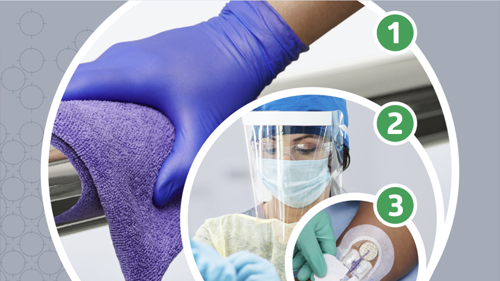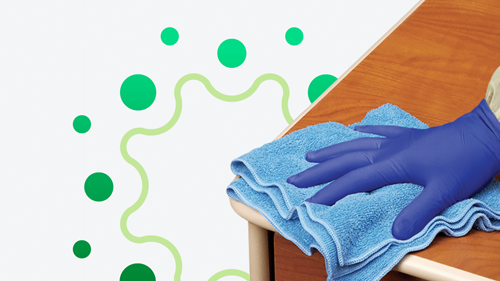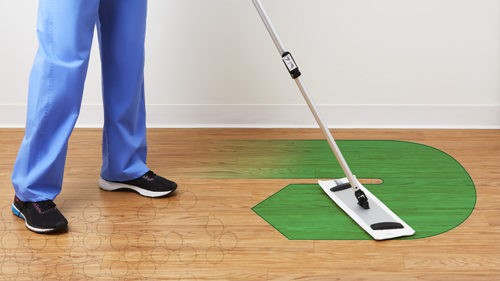How to keep soft surfaces clean in your healthcare facility
EVS can prevent pathogens on linens via effective transport and handling.
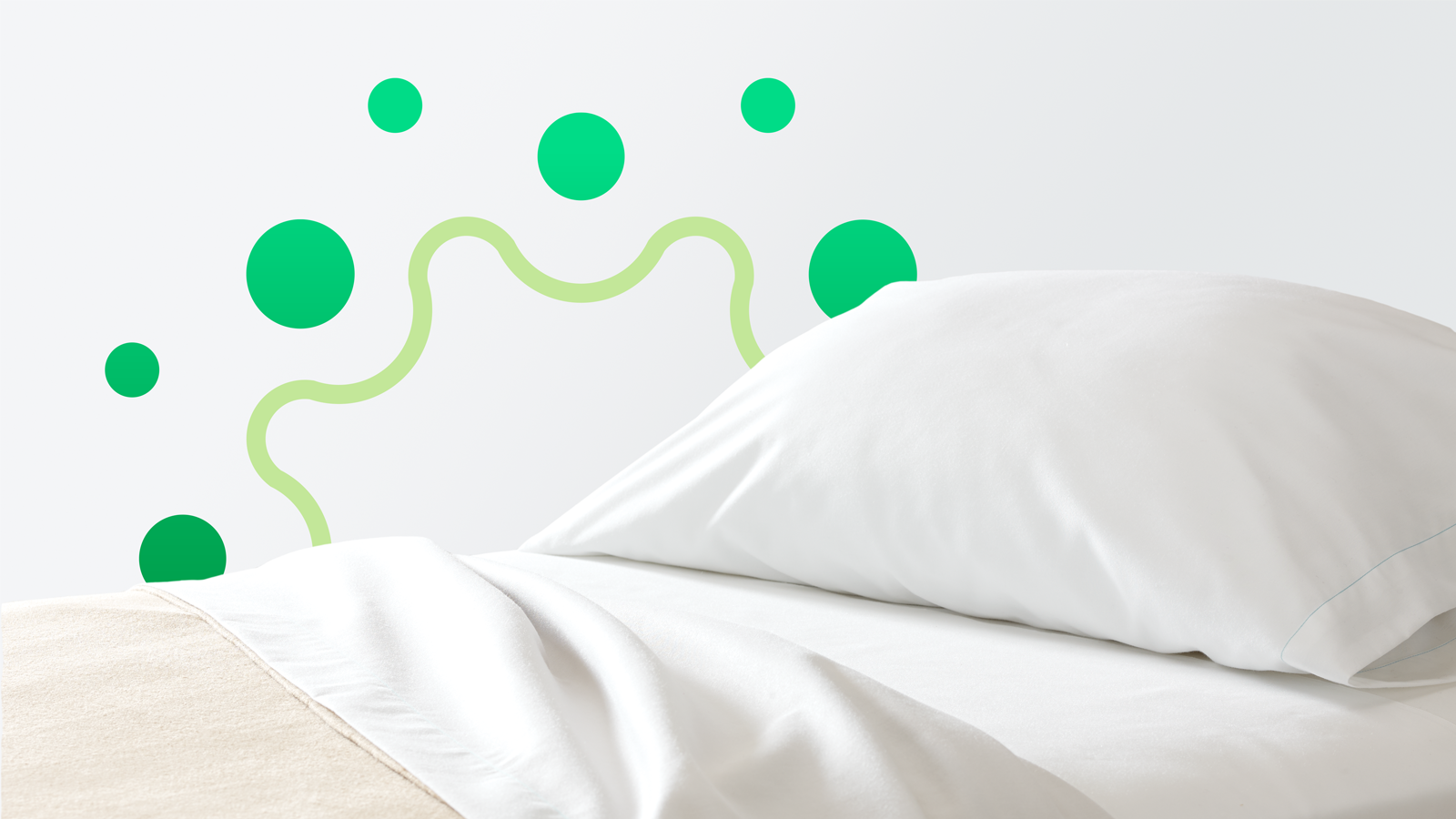
There’s nothing like a freshly made bed with clean linens. For patients and residents, beds should feel like a safe, germ-free space. But how germ-free are those linens? And pillows? And cubicle curtains?
Strict protocols require that linens and apparel be clean and hygienic before leaving the laundry. But as they’re transported to patients and residents, clean linens can pick up pathogens that live on healthcare equipment and bed rails, as well as visitors, staff and clinicians.1 The Environmental Protection Agency (EPA) considers linens to be fomites, or carriers, of these pathogens, which can transfer to your patients/residents and lead to healthcare-associated infections (HAIs).
This article is one in a three-part “Clean Fast and Well” series covering EVS best practices for cleaning and disinfecting patient/resident rooms. (In the other two articles, we focus on hard surfaces and air.)
Getting tough on soft surfaces
Environmental services (EVS) generally has formal processes and products for cleaning hard surfaces. And there are multiple methods for testing these surfaces for pathogens to ensure they’re clean. Soft surfaces are a different story: There are no standard testing requirements for surface materials or products to validate that they can be effectively cleaned using standard EPA-registered antimicrobial disinfectants.2
“People tend to be a little more lax with soft items or linens. But this is an area where cross contamination can occur very easily.”
Angela Zuick
Medline Director of Clinical Services
Soft surfaces abound in patient and resident rooms—from linens and pillows to cubicle curtains and mattresses. Cleaning these surfaces is only one part of the equation. Soft materials need to be kept clean while they’re transported and while they’re in use. Take laundry, for instance.
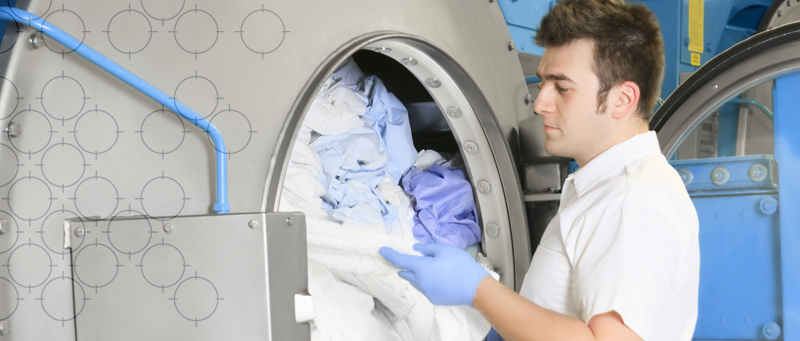
Airing our dirty laundry
First, how is soiled laundry handled? The Centers for Disease Control & Prevention (CDC) provides best practices for linen (and laundry) handling:
- Remember to wear reusable rubber gloves before handling soiled linens (for example, bedsheets, towels and curtains).
- Do not carry soiled linens against your body. Always place them in the designated container.
- Carefully roll up soiled linens to prevent contamination of the air, surfaces and cleaning staff. Do not shake linens.
- If there is any solid excrement on the linens, such as feces or vomit, scrape it off carefully with a flat, firm object and put it in the commode or designated toilet before putting linens in the container.
- Place soiled linens into a clearly labeled, leak-proof container (bag or bucket) in the patient/resident care area. Do not transport soiled linens by hand outside the specific area from where it was removed.
- Clean and disinfect the container for soiled linens after each use.
- If reusable linen bags are used inside the container, do not overfill them; tie them securely and launder after each use. Soiled linen bags can be laundered with the soiled linens they contained.3
In addition to keeping everyone safe, appropriate handling of soiled linens keeps laundry services within budget.
“People will throw away soiled linens in the medical waste bag, which is costly and not good for the environment,” says Angela Zuick, Medline Director of Clinical Services. “Healthcare facilities often pay for laundry based on weight. If the laundry returned is lighter than what the facility received, there will be increased charges for linens and medical waste management.”
Maintaining cleanliness
The good news is, healthcare facilities, and the laundries that serve them, are increasingly addressing infection prevention through innovative antimicrobial technology. SilvaClean®, for example, uses pure silver ions that bond with fabrics to residually kill 99.9% of certain organisms.4
6 touchpoints
Clean linens are touched about six times between washing and patient use5
Once the truck loaded with laundered linens has arrived at your facility, how do you keep the towels and sheets clean? The CDC provides best practices for management of clean linens:
- Sort, package, transport and store clean linens in a manner that prevents risk of contamination by dust, debris, soiled linens or other soiled items.
- Each floor/ward should have a designated room for sorting and storing clean linens.
- Transport clean linens to patient care/resident areas on designated carts or within designated containers that are regularly cleaned (at least once daily) with a neutral detergent and warm water solution.6
If your carts have curtains protecting the linens, ensure that the curtains are kept clean.
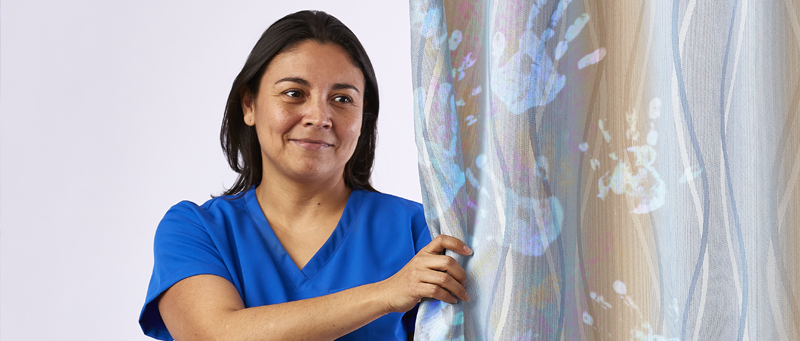
Cubicle curtains: A sullied reputation
The CDC identified 17 high-touch objects in patient rooms and resident rooms. However, cubicle curtains did not make the list, even though they rank as the sixth most commonly touched surface and have been shown to contain pathogens. These cubicle curtains serve two purposes: privacy and safety. Caregivers can use curtains as a screen while delivering procedures. They also take on the splash of blood and other potential infectious materials in acute care areas.
While cubicle curtains serve important purposes, how to clean and how often to change them is not clear. Several issues are involved:
- Many healthcare facilities have not developed a cubicle curtain cleaning or changing policy.
- Many healthcare facilities do not document cubicle curtain changes.
- The facility does not have room to store a sufficient inventory.
- Laundering slows room turnaround time.
- Hanging curtains often requires added resources like ladders and extends the room turnaround time.
Health Facilities Management offers some ways to work with the current situation and ideas for improvement:
- Determine which department “owns” the cubicle curtains.
- Use standard sizes with varying mesh lengths and hardware that allow housekeepers to remove curtains without using ladders.
- Use polypropylene recyclable curtains that eliminate laundering and cost a tenth of what fabric curtains cost. They can be stacked in totes so the curtains become part of the healthcare facility’s supply chain.
- Consider using glass privacy panels.
- Use curtains that have a clean edge or pull handle that helps users know where to place hands.
- Document changes to ensure that curtains are cleaned regularly.
Whatever the solution, it’s essential that facility designers, nursing, EVS, infection preventionists and others collaborate to find best-practice solutions.7
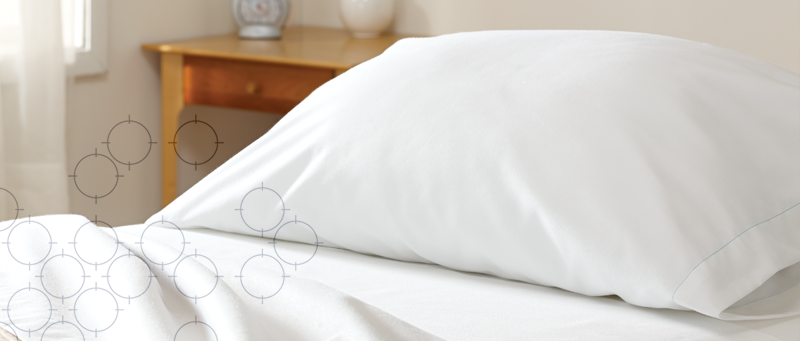
How to deal with pillows
Even if bed linens are kept clean, reusable patient/resident pillows pose a cross-contamination risk. This is because variability in disinfection technique, pillow condition and the effectiveness of disinfectant make it difficult to completely clean and disinfect the pillow. Cross contamination may occur from the pillow to the patient/resident, from the pillow to the healthcare worker to patient/resident and from the patient/resident to the pillow.
You should develop clear and rigorous guidelines for decontamination of patient/resident beds and pillows.8
Pillows and their covers should be easily cleanable, preferably in a hot water laundry cycle. These should be laundered between patients/residents or if contaminated with body substances.
And what about the mattress? A linen sheet placed on the mattress is not considered a mattress cover. Patches for tears and holes in mattress covers do not provide an impermeable surface over the mattress. Mattress covers should be replaced when torn; the mattress should be replaced if it is visibly stained. Wet mattresses, in particular, can be a substantial environmental source of microorganisms.9
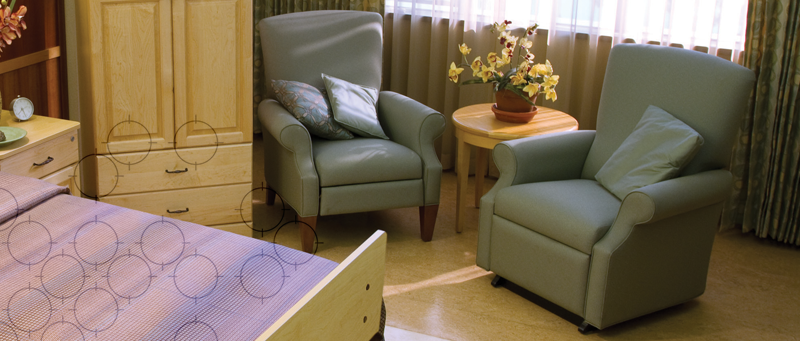
Reducing risk from carpet and upholstered furniture
While many healthcare facilities are making a concerted effort to avoid having rugs, carpets and upholstered furniture, these items are still around. The CDC provides guidelines for cleaning these soft surfaces:
- Vacuum carpeting in public areas of healthcare facilities and in general care areas regularly with well-maintained equipment designed to minimize dust dispersion.
- Periodically perform a thorough, deep cleaning of carpeting as determined by facility policy using a method that minimizes the production of aerosols and leaves little or no residue.
- If a spill occurs on carpet tiles, replace any tiles contaminated by blood and body fluids or body substances.
- Thoroughly dry wet carpeting to prevent the growth of fungi; replace carpeting that remains wet after 72 hours.
- Keep upholstered furniture in good condition by repairing tears and holes.
- If upholstered furniture in a patient/resident room requires cleaning to remove visible soil or body substance contamination, move that item to a maintenance area where it can be adequately cleaned with a process appropriate for the type of upholstery and the nature of the soil.10
As you can tell, it can be hard to clean and maintain soft surfaces. Each type requires its own process and products. But by following clear guidelines, you can help prevent the spread of HAIs in your facility.
Key takeaway
Hard surfaces tend to be the primary focus when we think about the cleaning and disinfection of rooms in healthcare facilities. But soft surfaces carry pathogens as well, and even recently cleaned textiles can become germ-ridden when not properly transported, handled and stored. By establishing and following formal procedures for keeping soft surfaces clean, you can help reduce the transmission of HAIs.
References:
- Cohen B, Hyman S, Rosenberg L, Larson E. Frequency of Patient Contact with Health Care Personnel and Visitors: Implications for Infection Prevention. Joint Commission journal on quality and patient safety / Joint Commission Resources. 2012;38(12):560-565.
- Healthcare Surfaces Institute. Available at https://www.healthcaresurfacesinstitute.org/. Accessed November 12, 2021.
- CDC. Environmental Cleaning in Resource-Limited Settings. Appendix D—Linen and laundry management. Available at https://www.cdc.gov/hai/prevent/resource-limited/laundry.html. Accessed November 12, 2021.
- newsroom.medline.com. What lab coats and scrubs have to with infection prevention. May 30, 2019. Available at: https://newsroom.medline.com/infection-prevention/what-lab-coats-and-scrubs-have-to-do-with-infection-prevention#.
- Cohen B, Hyman S, Rosenberg L, Larson E. Frequency of Patient Contact with Health Care Personnel and Visitors: Implications for Infection Prevention. Joint Commission Journal on Quality and Patient Safety / Joint Commission Resources. 2012;38(12):560-565.
- CDC. Environmental Cleaning in Resource-Limited Settings. Appendix D—Linen and laundry management. Available at https://www.cdc.gov/hai/prevent/resource-limited/laundry.html. Accessed November 12, 2021.
- Birchfield, Mitch. Cubicle curtains the elephant in the room. Health Facilities Management, January 6, 2016.
- How Clean Are the Pillows in Your Hospital? Infection Control Today, January 15, 2014. Available at: https://www.infectioncontroltoday.com/view/how-clean-are-pillows-your-hospital.
- CDC. Environmental Infection Control Guidelines. Background G. Laundry and Bedding. Available at: https://www.cdc.gov/infectioncontrol/guidelines/environmental/background/laundry.html. Accessed November 12, 2021.
- CDC. Environmental Infection Control Guidelines. Carpeting and Cloth Furnishings. Available at: https://www.cdc.gov/infectioncontrol/guidelines/environmental/index.html. Accessed November 12, 2021.
